Welcome to the amazing world of ChessBase 17
ChessBase 17 is going to be launched on 23rd of November 2022. It is just 8 days away. As we are holding the Mega Diwali Sale from 14th to 16th November 2022, we have put up the ChessBase 17 and its variants up for pre-order. But we would like you to know the major features of ChessBase 17. With the improved analysis functions, data format, search mask and the very exciting feature of finding beauty in games you are sure to get your money worth by going for the all-new ChessBase 17. We also have an interview with the main programmers of the ChessBase 17 software in the article.
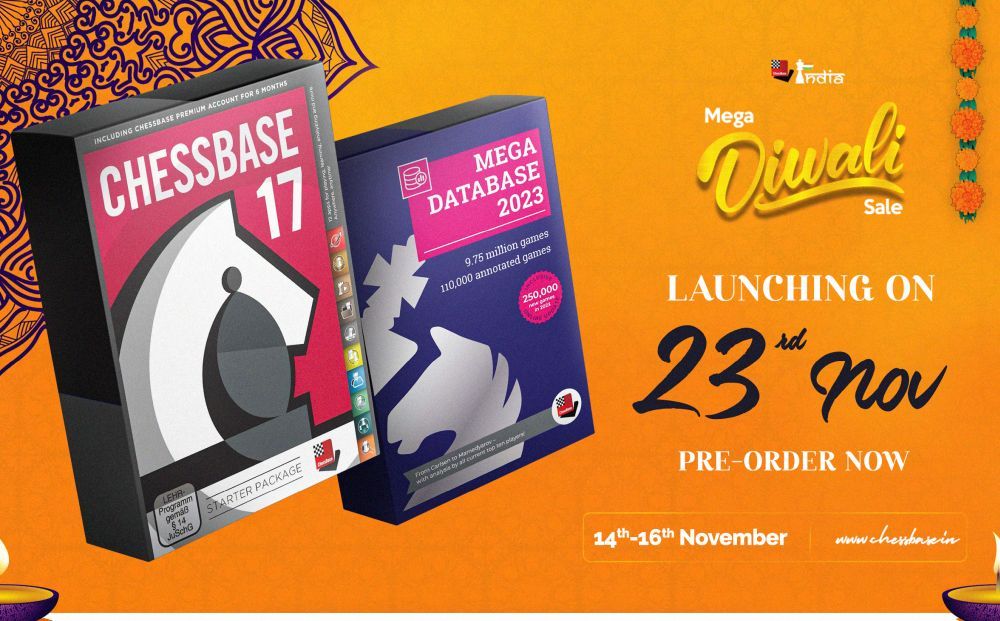
Every two years a new version of ChessBase is released. And we try to coincide the ChessBase India Mega Diwali sale with it. This year the festival of Diwali took place in October. However, we decided to keep our Diwali sale closer to the date of the release of ChessBase 17. ChessBase 17 along with its variations and Mega Database 2023 are going to release on 23rd of November. However, we have launched the pre-order option on our website, so that you can place the order at a discounted price.

While it is true that many of you would be excited with the new version of ChessBase coming out, you would definitely be interested to know more about its features so that you can make an informed decision about purchasing it. Below are some of the main features of ChessBase 17. But before reading them we would heartily recommend you to watch the video where the makers of ChessBase 17, two of the main programmers of the software - Matthias Wuellenweber and Mathias Feist show some of the most important features.
1. Determining the Beauty of games
You now have a database of ten million games, but how do you find the really exciting hidden treasures in it? In earlier versions of ChessBase there were some approaches to this: The search for combinations. But it was not always possible to find the most beautiful games. ChessBase 17 attributes "beauty" to each game, in four stages. Beauty is awarded between zero and three medals in a new column of the game list. This makes each database sortable by beauty, i.e. the spectacular games are at the top. This is only possible in the new data format (2CBH). We will talk about this format later in this article.


You can set the beauty values once for your large databases. This takes a few hours, because every game has to be replayed, and every position has to be examined. A fast computer can handle about 600 games per second. I found a very interesting use of this feature. Let's say I have been very keen to study the games of Alexander Alekhine. So I open my Mega Database and search for the games of Alekhine. Then I select all the games of Alekhine and paste them in a new 2CBH format database. The Mega Database 2023 comes in 2CBH format, so you would not even need to create a new database for using the set beauty button on the games of Alekhine. I have 2328 games of Alekhine in a new database now. I go to the games tab and click on Set Beauty button as shown above. It takes roughly two seconds for the entire process to be done.
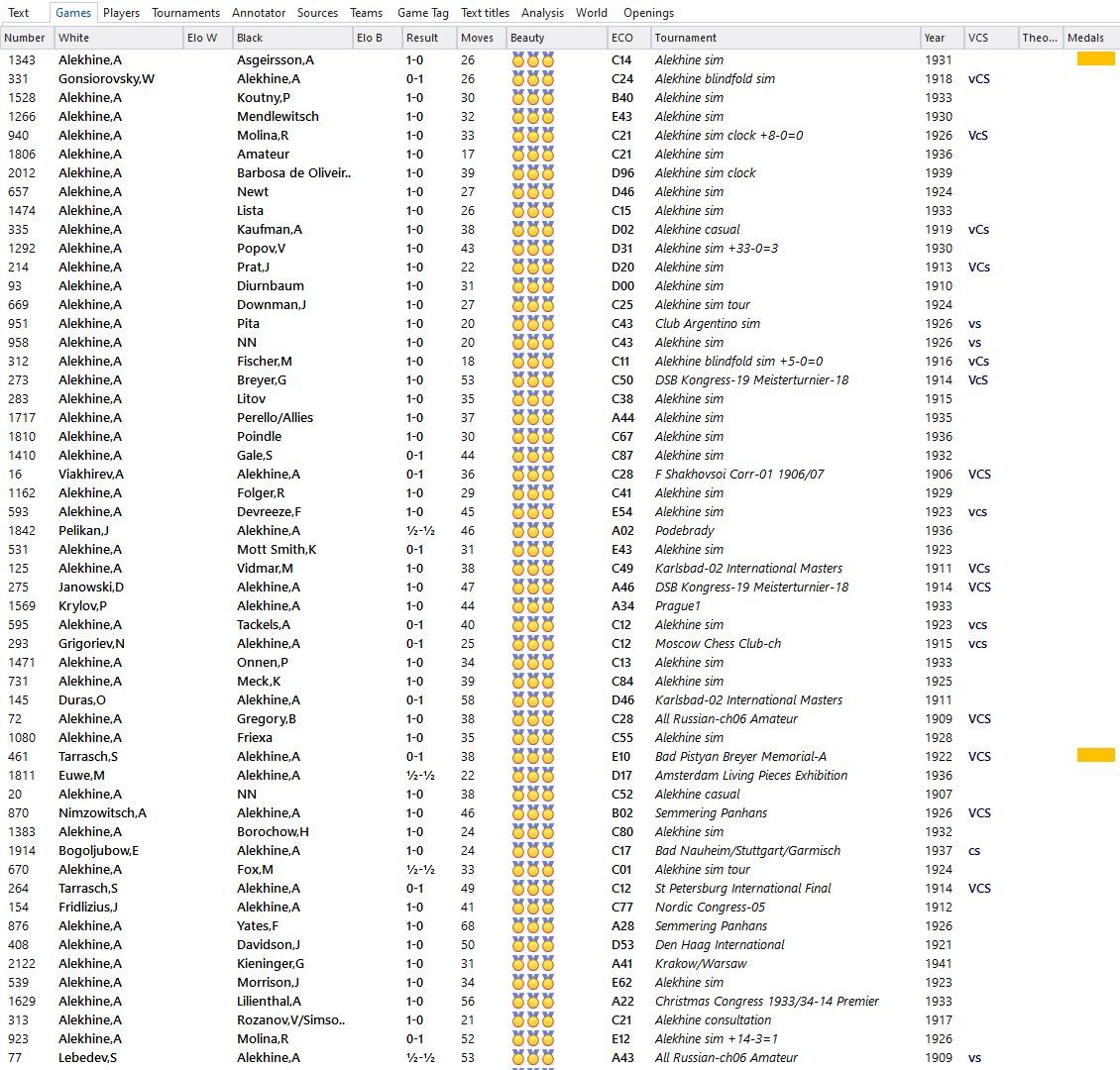
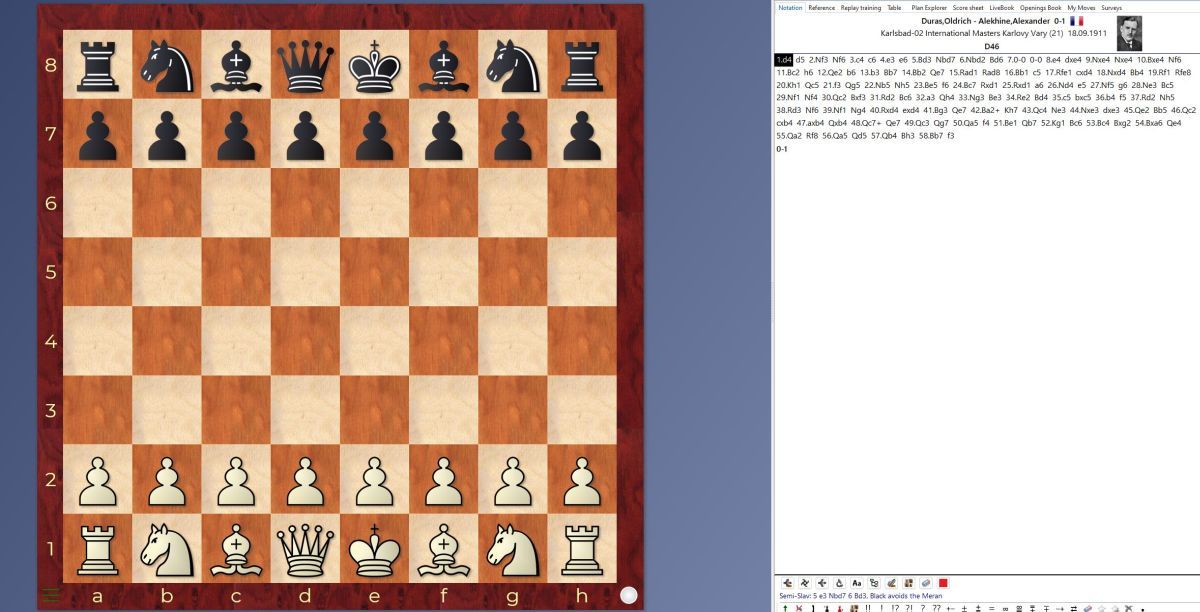
But there is another thing that can be done in ChessBase 17, which is Detect Sacrifices! There is a red button to the bottom of your screen.


The white bishop has moved to b7. The training function wants to know: how did Alekhine as Black finish the game? Answer: Black pushed his pawn down the board to f3, and after Bxd5 f2 it's just game over! You can see how just two clicks – Set Beauty in the Database and then Detect Sacrifices when you open the game – can give you the key moments in the games of any database. This is great for training material, and it can help you to better understand the games of many world class players.
The above functions are only available in the new 2CBH data format. On all database types (also Cloud or PGN) you can search for beautiful games: To do this, click on "Beautiful games" in the advanced search mask. This will find all games with at least one beauty medal:
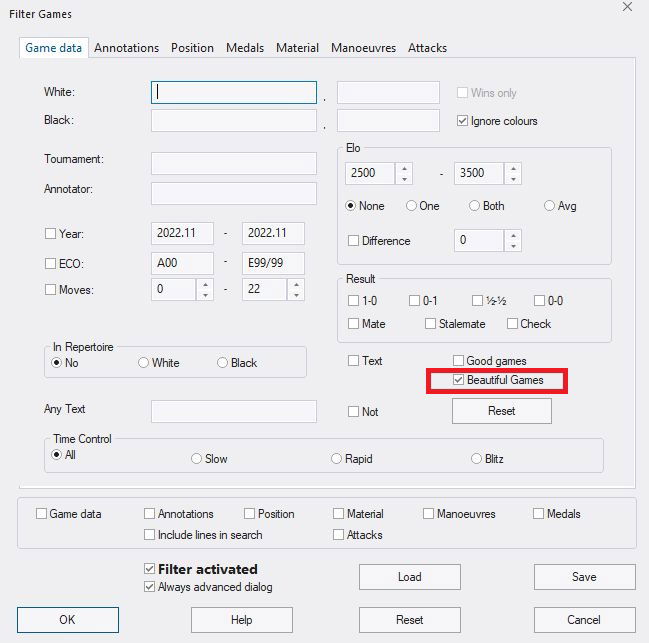
2. New Engine Analysis
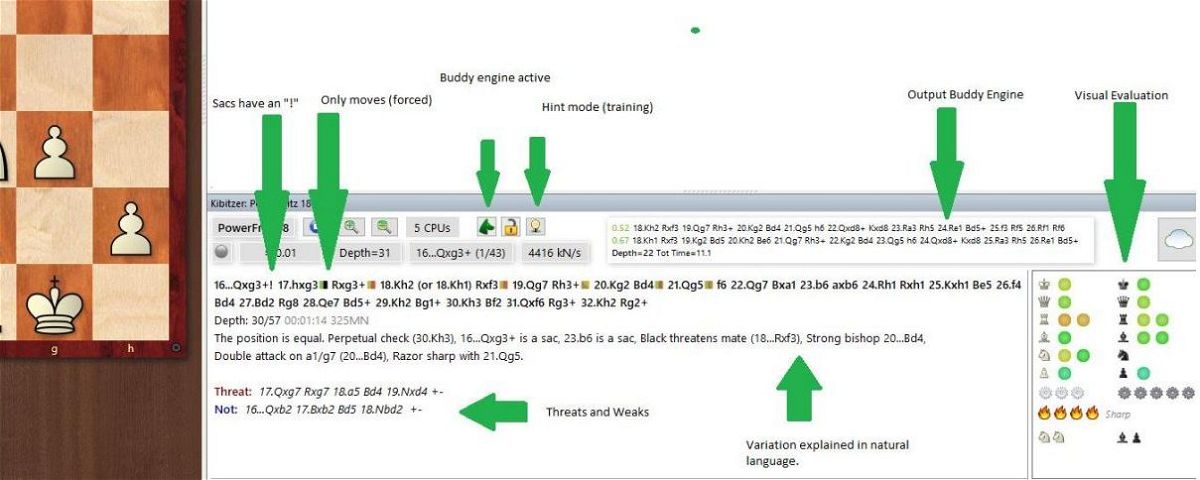
The output of engines has been running unchanged for a long time in the form we introduced it with ChessBase 2.0 under MSDOS over 30 years ago: variations, evaluations, all of this quite dry. In ChessBase 17 this is approached anew. Earlier you would see variations and the engine would tell you what the best move is. However, ChessBase 17 describes in words what is the meaning behind a move and why is it winning or losing. It explains it's evaluations and the moves and the logic behind it. Exciting are statements like: "White gets a dangerous passed pawn on e6". Or "White sacrifices a runner", "Black has a resounding attack", "White gets the majority on the king's wing". "Both kings are weak". "White plays a lever". "Maneuver Nd2-f1-e3-d5."
A few more features are:
1. You move the mouse arrow on a variation and the position appears on the main board.
2. Alternatively: You can play your arrow on the engine variations and then play the moves with arrow keys. The chess board's background turns slightly light in colour to signal that you are not moving in the game. As soon as the mouse arrow leaves the engine variations, the starting position is back on the board and the arrow keys act again on the continuation of the game.
3. The colourful new "Buddy engine"
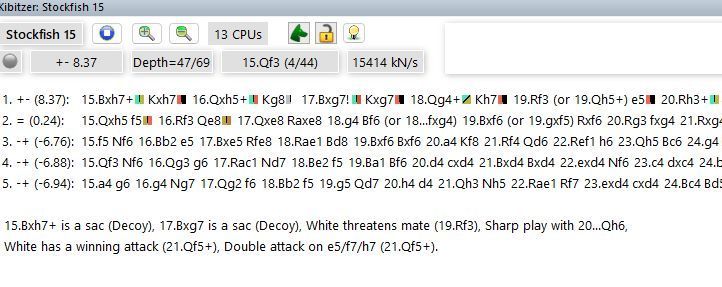
The buddy engine analyzes the positions of the engine variation and determines whether moves are forced. Forced moves are marked with a coloured square (a square is the well-known symbol for "only move"). A forced variation is immediately recognizable: it looks quite colourful. It is useful to find forced variations: For example, you can use this feature to select a slightly "worse" move in the opening preparation, but one that requires the highest level of accuracy from your opponent, because everything is forced. This line can have higher practical chances of winning than a move, which is perhaps a third of a pawn better, but easy to handle.
Buddy speeds up the search
For years players have been used to switch engines to analyse at least two variations. In the two-lines mode you can see if the best move is the only possible one. But that has a price: a multi-variant search runs slower than the single-variant search. With Buddy in ChessBase 17 the one-variant search makes sense again. The buddy simply looks at the current position and tells you to what extent the engine move is forced, i.e. that it is the only reasonable one. The name Buddy was chosen because it acts as a buddy of the main engine. It uses only a quarter to a fifth of the hash and CPU resources, leaving the main machine with almost unlimited power. In most cases, the auxiliary engine is sufficient to check that the main move is far superior to the next-best move. Ant this allows the main engine to go much deeper in the single-variant search it is conducting.
Buddy's commentary symbols come in different geometric shapes and colours:
* The left/top colour shows the rating of the best move.
*The second colour corresponds to the second-best move: Green = move leads to advantage; Yellow = roughly balanced; Red = losing
A vertically split shows that the best move is trivial, diagonal from left top to right bottom means: not trivial, but easy to find. Diagonal from right to left bottom means the move appears later in the search, so it is harder to find.

In the above image: 21. Nf4 is winning and the best move. After the second-best move, White is also good. 23.Nxh5 is clearly the best. If White does not take on h5, the advantage is gone. Black has to take back, but that is still losing, as shown by the red mark.
Note that Buddy calculates slower than the main engine, because:
1. It looks at many moves, and therefore has less computing time per move;
2. It only uses one CPU.
This can lead to discrepancies if the main engine detects a different sharp move at great depth. However, this is not a problem in practice, because you understand that immediately, and it in fact indicated an interesting property of the position (complexity). When you see the discrepancy, you simply switch (with full hash tables) to the two-variant search.
4. New Data Format
The CBH format, which has existed since ChessBase 6.0, has reached its limits. The new format removes all boundaries. For example, there are no more limits on player names, tournament identifiers, etc. The "2CBH" format requires fewer files and uses modern caching methods of the operating system. Furthermore, there is no longer any need for search boosters, the updating of which repeatedly caused performance problems. 2CBH is conceptually simpler and therefore more robust. Functions such as reorganizing therefore sometimes run twice as fast as in the old CBH format. The new format requires more space on the disk, which is relatively unimportant with today's disc sizes. With the new format comes new functionality.

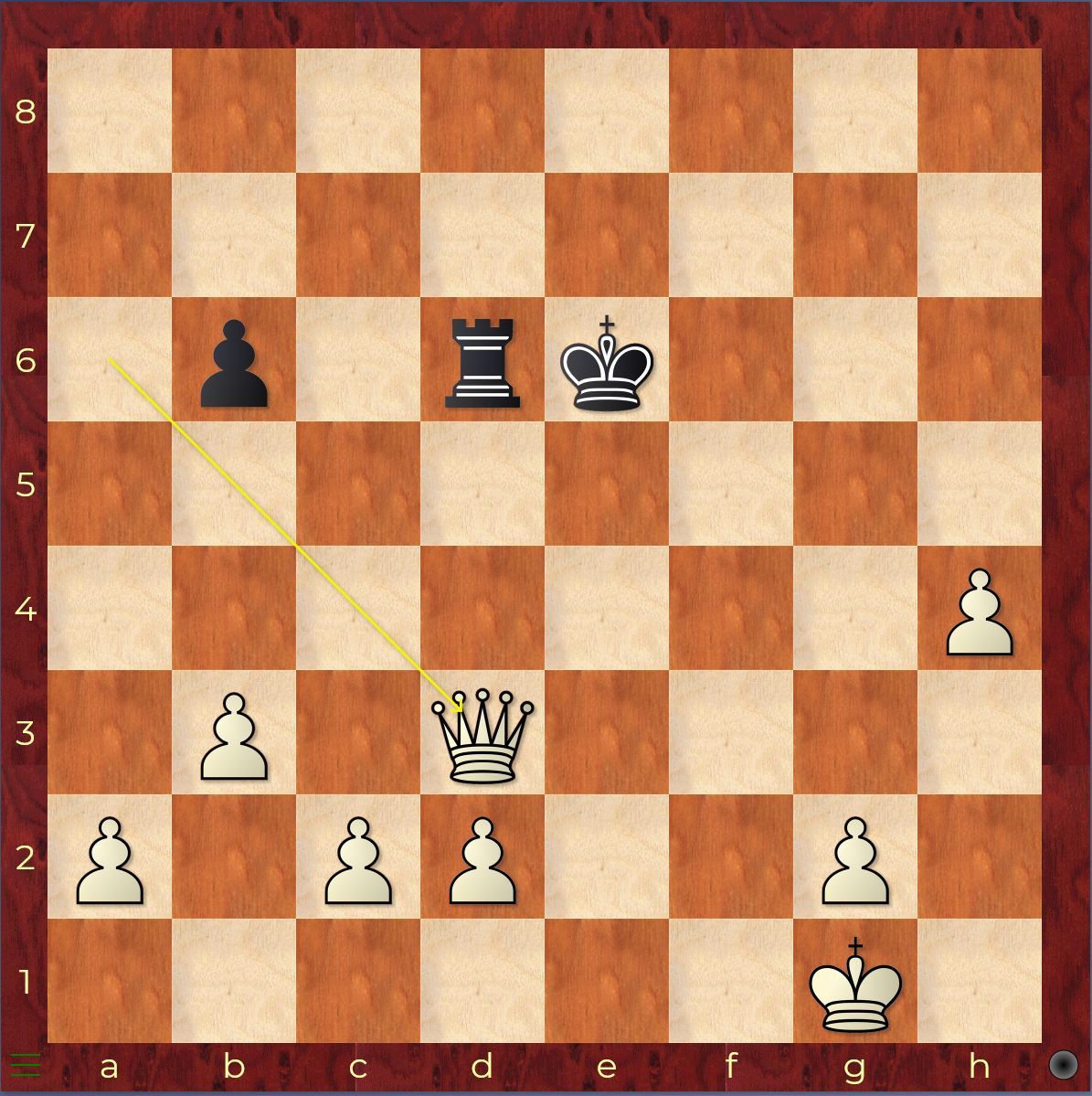
In this position White took the pawn on d3 with the queen and Black resigned.

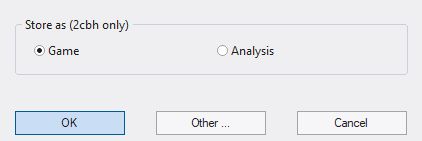
5. Interactive search Mask
This is new and very powerful: the search mask runs interactively for most important search requests: before the actual search starts, it anticipates what you are looking for. The search topics Player, Tournament, ECO, Material and Position are easier to enter.
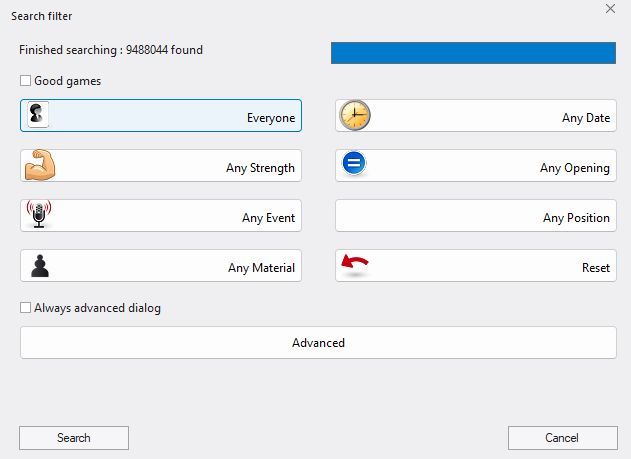
The new search works differently from the old search: If you enter "Caru" under Player, games of "Carucci", "Caruso" and "Caruana" are found with the classic search mask. With the new search mask, a selection list appears:

If you simply click OK, the first player in the list (with the highest number of games) will be selected.

6. Interactive Position Input
The blindingly fast search functions makes it possible: when you enter a position, the games in which the matching parts of the position occurred are displayed on the right, after each change is made. If you start entering a position from a chess book or magazine, chances are you will see the relevant game from your database. When you spot it in the list a single click is all that is required to complete the full position from the game.

You can read the ChessBase 17 Beta Manual, if you would like to from here.
Buy ChessBase 17 and products related to it:
All products with clickable links:
ChessBase 16 upgrade to ChessBase 17
Mega Database upgrade from 2022 to 2023
ChessBase 17 + Mega Database 2023 Combo
ChessBase 17 upgrade + Mega Database 2023 upgrade

The entire ChessBase India Catalogue


